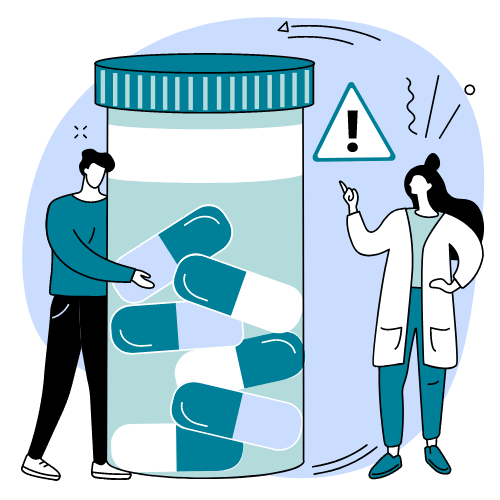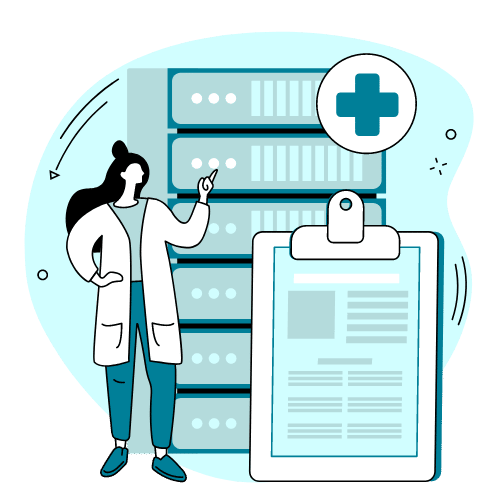Revolutionary discoveries in neuroscience are transforming how addiction treatment addresses trauma, offering new hope for people whose substance use stems from unresolved traumatic experiences. Memory reconsolidation therapy represents a groundbreaking approach that allows therapists to help clients literally rewrite traumatic memories, reducing their emotional impact and breaking the cycle that often drives addiction.
This emerging field challenges traditional assumptions about how memories work and whether traumatic experiences can truly be healed. For the millions of people whose addiction is rooted in trauma, these breakthroughs offer the possibility of addressing root causes rather than just managing symptoms.
Understanding how memory reconsolidation works and its applications in addiction treatment reveals why this approach is generating excitement among trauma specialists and addiction professionals worldwide.
The Science of Memory Reconsolidation
Traditional views of memory suggested that once formed, memories became fixed and unchangeable. Traumatic memories, in particular, seemed permanently etched in the brain, capable of triggering intense emotional responses years or decades after the original event. This understanding led to treatments focused on helping people cope with traumatic memories rather than changing them.
Recent neuroscience research has overturned this assumption. Scientists have discovered that each time we recall a memory, it becomes temporarily malleable—entering a state called “labile” where it can be modified before being re-stored. This process, known as memory reconsolidation, occurs naturally but can be therapeutically harnessed to reduce the emotional charge of traumatic memories.

During the brief window when a memory is retrieved and labile, new information can be incorporated into the memory trace before it reconsolidates. This means that traumatic memories can be updated with new, corrective information that reduces their emotional impact and changes how they affect current behavior and feelings.
The process requires precise timing and specific therapeutic techniques, but when done correctly, it can lead to profound and lasting changes in how traumatic experiences impact a person’s life. Rather than learning to cope with trauma, people can experience genuine resolution where the memories lose their power to trigger intense distress.
Trauma’s Role in Addiction Development
Understanding memory reconsolidation’s potential in addiction treatment requires recognizing the fundamental role trauma plays in substance use disorders. Research consistently shows that the majority of people seeking addiction treatment have histories of significant trauma, often beginning in childhood.
Traumatic experiences create lasting changes in the brain’s stress response systems and emotional regulation networks. These changes can lead to chronic hypervigilance, emotional numbing, difficulty trusting others, and challenges managing intense emotions—all of which increase vulnerability to addiction.
Many people discover that substances provide temporary relief from trauma-related symptoms. Alcohol and drugs can quiet hypervigilance, temporarily ease emotional pain, and provide escape from intrusive memories. Over time, this self-medication pattern can develop into full addiction, with the original trauma remaining unresolved.
Traditional addiction treatment often focuses on helping people develop coping skills for managing trauma symptoms without substances. While valuable, this approach doesn’t address the underlying traumatic memories that continue to generate symptoms. Memory reconsolidation therapy offers the possibility of healing trauma at its source, potentially eliminating many symptoms rather than just teaching people to manage them.
Memory Reconsolidation Techniques in Practice
Several therapeutic approaches utilize memory reconsolidation principles, each with specific protocols for safely accessing and modifying traumatic memories. These techniques require specialized training and careful implementation to ensure both safety and effectiveness.
One approach involves having clients recall traumatic memories while in states that promote new learning, such as during specific types of therapy sessions or while engaging in particular physical activities. The key is creating conditions where new, corrective information can be integrated into the memory during the reconsolidation window.
Another technique involves pairing memory recall with positive experiences or new perspectives that contradict the original traumatic learning. For example, a memory of helplessness might be reconsolidated with new information about the person’s current strength and resources, fundamentally altering how that memory impacts their sense of self.
Some approaches use specific medications that enhance neuroplasticity during therapeutic sessions, making the brain more receptive to incorporating new information into existing memories. These pharmaceutical interventions must be carefully timed and administered by qualified medical professionals.
The most effective memory reconsolidation work often occurs within comprehensive treatment programs that provide safety, support, and expertise in trauma-informed care. The process can temporarily increase emotional intensity as memories are accessed, making professional support crucial for successful outcomes.
Integration with Addiction Treatment
Memory reconsolidation therapy integrates naturally with established addiction treatment approaches, enhancing rather than replacing proven interventions. When traumatic memories are successfully reconsolidated, clients often find that traditional therapeutic techniques become more effective because they’re no longer fighting against ongoing trauma symptoms.
For example, cognitive-behavioral therapy may work more effectively when clients aren’t constantly triggered by unresolved traumatic memories. Group therapy participation often improves when social anxiety rooted in interpersonal trauma is reduced through memory reconsolidation work.
The timing of memory reconsolidation therapy within addiction treatment requires careful consideration. Clients typically need some period of sobriety and emotional stability before engaging in intensive trauma work. However, addressing trauma too late in treatment may mean missing opportunities to remove significant barriers to recovery.
Many treatment centers are developing protocols that integrate memory reconsolidation techniques throughout the treatment process, beginning with stabilization and safety, progressing through trauma processing, and concluding with integration and relapse prevention that incorporates the new understanding of healed traumatic memories.
Benefits Beyond Symptom Reduction
Memory reconsolidation therapy offers benefits that extend beyond simply reducing trauma symptoms. When traumatic memories are successfully reconsolidated, people often experience profound shifts in their sense of identity, self-worth, and possibilities for the future.
Many clients report feeling like they’ve been freed from limitations they didn’t even realize they were carrying. Relationships improve as interpersonal trauma no longer dictates how they interact with others. Career and life goals that once seemed impossible become achievable as trauma-based fears lose their grip.
These changes can significantly impact recovery sustainability. When addiction was primarily driven by trauma symptoms, successful trauma resolution often dramatically reduces relapse risk. People no longer need substances to manage symptoms that no longer exist at their previous intensity.
The sense of empowerment that comes from experiencing genuine trauma healing can also strengthen commitment to recovery and personal growth. Rather than feeling like victims of their past, people often emerge from memory reconsolidation work feeling capable of creating the lives they want.
Challenges and Considerations
While promising, memory reconsolidation therapy requires careful implementation and isn’t appropriate for everyone. The process of accessing traumatic memories can temporarily increase emotional distress, making adequate support systems essential.
Some traumatic memories are too fragmented or complex to address through current reconsolidation techniques. Others may be so fundamental to a person’s sense of identity that attempting to modify them could create more problems than benefits.
The field is still developing standardized protocols and training requirements for practitioners. This means that the quality and safety of memory reconsolidation therapy can vary significantly depending on the provider’s experience and training.
Additionally, not all trauma contributes to addiction in ways that would benefit from memory reconsolidation approaches. Some people develop resilience and post-traumatic growth that doesn’t require intervention, while others might benefit more from other trauma treatment approaches.
The Future of Trauma-Informed Addiction Treatment
Memory reconsolidation research is opening new frontiers in understanding how trauma impacts addiction and how both can be more effectively treated. Future developments may include more precise techniques for identifying which memories to target, better methods for ensuring safety during the process, and clearer protocols for integrating this work with addiction treatment.
Advances in neurotechnology may eventually allow for more targeted and efficient memory reconsolidation procedures. Brain imaging and neurofeedback technologies could help identify optimal timing for interventions and monitor progress in real-time.
The growing understanding of memory’s malleable nature is also influencing how treatment centers approach trauma-informed care more broadly. Even without formal memory reconsolidation therapy, knowing that memories can change encourages more optimistic and active approaches to trauma treatment.
Swift River’s Approach to Trauma and Memory Work
At Swift River, trauma-informed care represents a cornerstone of our treatment philosophy. While memory reconsolidation techniques are still emerging, our clinical team stays current with developments in trauma treatment to ensure clients have access to the most effective interventions available.
Our comprehensive approach to trauma includes traditional evidence-based therapies combined with awareness of newer developments like memory reconsolidation. This ensures that clients receive established, proven treatments while remaining open to incorporating beneficial innovations as they become available.
The integration of trauma work with addiction treatment requires expertise in both fields, which our clinical team provides through specialized training and ongoing education. This dual expertise ensures that trauma treatment enhances rather than complicates addiction recovery.
Memory reconsolidation represents one of the most exciting developments in trauma treatment, offering hope for genuine healing rather than just symptom management. As research continues to refine these techniques and establish safety protocols, they promise to transform addiction treatment for the millions of people whose substance use stems from unresolved trauma.
For people whose addiction is rooted in traumatic experiences, these breakthroughs offer the possibility of addressing root causes and achieving levels of healing previously thought impossible. Combined with comprehensive addiction treatment, memory reconsolidation therapy may represent the future of truly integrated, effective treatment for trauma-related addiction.
Ready to learn more about trauma-informed addiction treatment and the latest advances in trauma therapy? Call Swift River at (413) 570-9698 to speak with our clinical team about comprehensive treatment approaches that address both addiction and underlying trauma.












